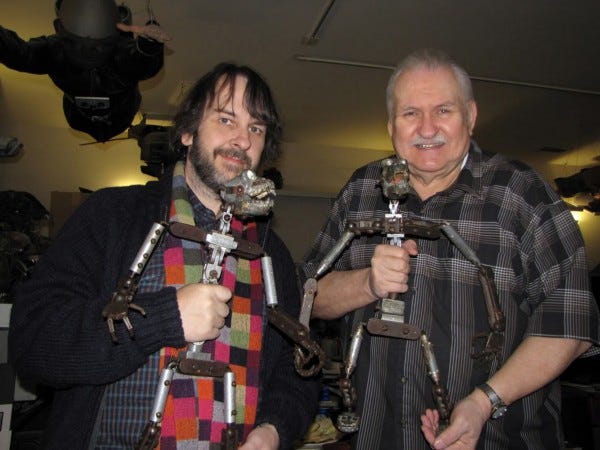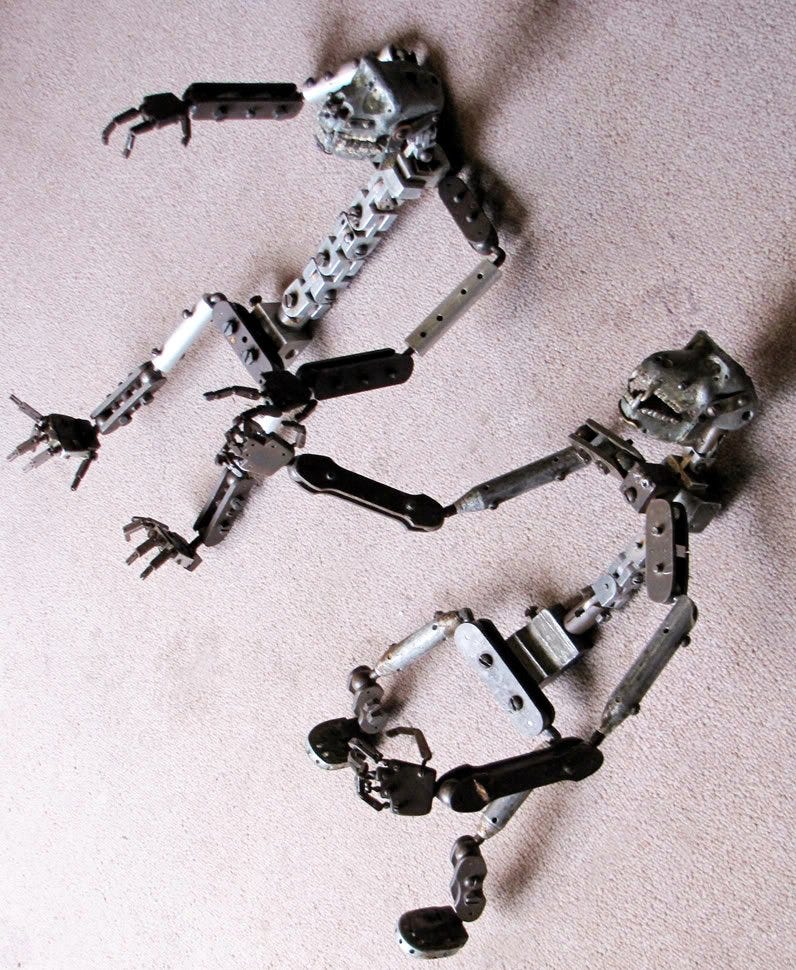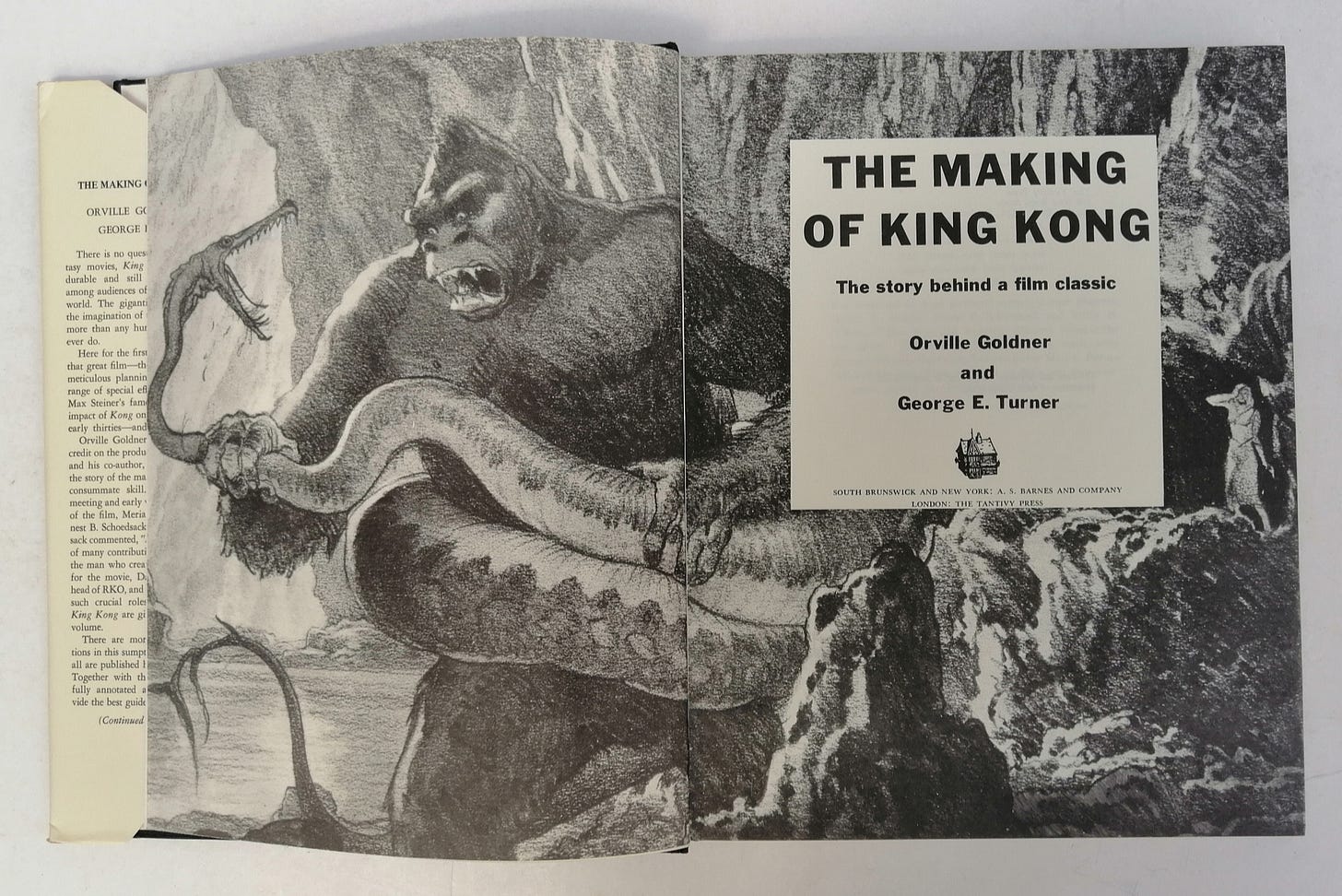A Tale of Two Kongs, Or is it Three?
When George E. Turner and Orville Goldner released The Making of King Kong in 1976, interest in how the 1933 film was made went into overdrive. Even today, this is considered one of the best books on film history ever printed. Before this, most of what King Kong fans knew about how the film was made came from “Famous Monsters In Filmland” magazine, which relied on older newspaper and magazine articles, which could be wildly inaccurate, and tales told by surviving members of the production crew, namely Marcel Delgado, who had constructed the animation models initially.
One story that spread through the years, beginning with the release of “The Making of King Kong,” was that Merian C. Cooper was dissatisfied with how small Kong looked climbing the Empire State Building and had a larger model built for those sequences.
So here’s what we know. Stories about an eighteen-inch-tall Kong seem to have originated with Marcel Delgado, prompting most writers about the film to talk about a one-twelfth-scale Kong, built so that one inch equals one foot, meaning that Kong was eighteen feet tall. Without points of reference, he does appear to be eighteen feet tall in the jungle sequences. Measurements of actual elevated trains in New York compared to the elevated train sequence would suggest that Kong was over thirty feet tall in those sequences, feeding into the story about a larger model, said to be twenty-four-inches tall, still one-twelfth-scale on a miniature set also built on one-twelfth-scale would naturally appear taller, closer to thirty feet. This appeared to match stories told by O’Brien to Bob Burns when O’Brien was working on “The Black Scorpion.”
Delgado, who outlived O’Brien by more than ten years, insisted that only two kongs were made, which seems to conflict with Cooper and O’Brien’s story. Existing photographs show two fully dressed models of Kong standing next to each other. No photographs show a third, almost thirty percent taller model with the other two.
Fans had for years noticed a change in Kong’s face in different sequences. Longer, with less prominent brows and lips in some shots, and rounder, with more prominent lips and brows in others. They dubbed one “long-face” and the other “round-face” with the theory being that two models were built so that animators could switch between them, potentially doubling their production speed as two crews could work at the same time.
In 2009, Christie’s Auction House listed a twenty-two-inch tall armature for sale, seemingly confirming the stories of a larger, twenty-four-inch tall Kong. This armature was purchased by Peter Jackson, who had just finished filming his version of King Kong—but does it?
Comparing the King Kong armature owned by Bob Burns, which had been dressed for Son of Kong when it was discovered, with the armature purchased by Peter Jackson, we see that the Burns Kong is slightly more than nineteen inches tall, and the Peter Jackson Kong is slightly more than twenty-two inches tall, a difference of three inches, not the six inches previously mentioned. The difference in height appears to come from how the hips and lower spine of the two models were built. Delgado might have been guessing when he said Kong was eighteen inches tall; neither of these armatures was that size.
We know that Merian C. Cooper was able to put together enough money to do one sequence of King Kong before the studio would give him the money for a full production. Using sets made for “The Most Dangerous Game” and models made for “Creation” (a canceled production), Cooper had O’Brien film the sequence where the sailors try to cross the log bridge made for “The Most Dangerous Game” only to encounter King Kong, who kills all the sailors except for Jack and then goes to save Ann from a Tyrannosaurs Rex that wanders into the area. That sequence, still one of the most impressive in the whole film, impressed the studio enough that the rest of the film was made.
So, what do I think happened?
Marcel Delgado was pretty old when he told of eighteen-inch Kongs. The idea that Kong was made on a one-twelfth or one-inch-to-one-foot scale was probably a supposition by later writers. O’Brien and Cooper were pretty old when they talked about making Kong bigger in New York. With “King Kong” filmed in 1932 and these conversations taking place in the fifties and sixties, it’d be understandable if details get confused, especially since we have someone else’s recollections of what they said.
When I watch the film, which I’ve done quite a lot, the only time I see the “long-face” Kong is in the log and T Rex sequence; other than that, it’s always the “round-face” Kong. It’s really pretty easy to tell them apart, just by the eyebrows. I don’t believe animators were switching back and forth between the two models. I think once they got the go-ahead to make the whole movie, O’Brien had a better armature made, using things he learned from animating the “long-face” armature, and once it was ready, they never went back to the first one.
When you compare the Jackson Kong armature with the Bob Burns Kong armature, it’s clear the Burns model was more sophisticated. Both skulls are made from cast aluminum, probably using the lost-wax method, which is why they aren’t identical. The Burns Kong has a longer snout and more refined details. Both have the same attachment points for the wire that would animate the lips and brows.
Unless a third, twenty-four-inch armature shows up, the story about a larger Kong is unlikely to be accurate. It’s still possible, as the scale of Kong clearly changes in some New York sequences, but that doesn’t necessarily mean there was another armature. There are photographs of two models dressed for “Son of Kong,” but that’s a whole other issue.
The biggest issue remaining about King Kong is whether or not the famous “spider pit” sequence was filmed or just planned. I’ve talked to so many people through the years about the Spider Pit sequence, usually with them hoping I knew something or had some proof one way or the other. I don’t. Honestly, I never really cared. It would have been cool to see it taken by itself, but if it had been stuck between the log and the t-rex sequences, it probably would have wrecked the momentum, just as Cooper said. There were lots of scenes that were talked about and not filmed, or filmed and deemed unusable. That’s part of making movies. It wouldn’t have changed the outcome of the picture, so I’m ok with the film as we have it.






